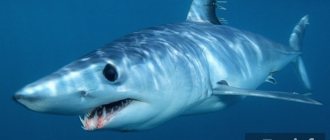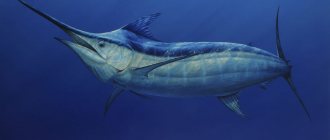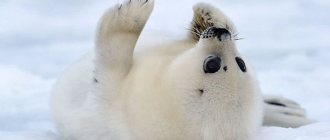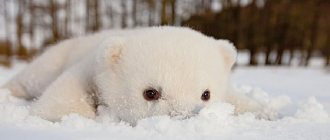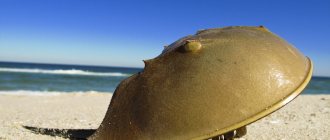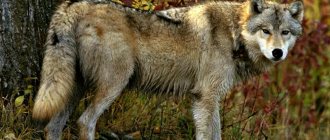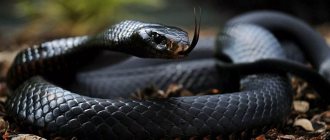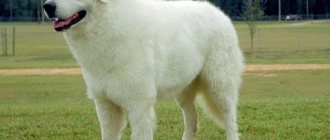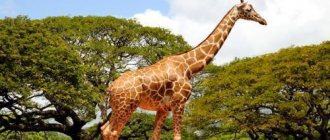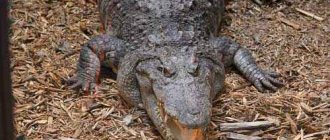The carnivorous order has about 16 families, 280 species. They are distributed almost all over the world. In ordinary life, it is customary to call not only mammals, but also all carnivorous vertebrates, predators.
Carnivores are most often those that hunt other vertebrates. Once upon a time there were no large predatory animals among mammals, but gradually they began to stand out for their size.
The largest land and underwater predators on Earth can weigh up to 100 tons and grow up to 20 m in length. We will talk about them in more detail in the article.
Andean condor
The largest flying bird in the Western Hemisphere is the Andean condor . Its wingspan is from 260 to 320 cm. It is also distinguished by its significant weight: males - from 11 to 15 kg, females from 8 to 11 kg. The length of these birds is from 117 to 135 cm. It can be found in South America, in the Andes.
It has black shiny plumage, a white collar around its neck, and white feathers on its wings, especially noticeable in males. Adults have a neck and head without feathers; chicks have gray down there.
This bird is especially impressive when it soars high in the sky, spreading its wings, rarely flapping. They rise from the ground with difficulty, after a long run. The Andean condor feeds on carrion and can travel vast distances, up to 200 km, in search of food.
a lion
10 thousand years ago it was the largest and most widespread mammal. But now their numbers have decreased significantly. So, if in 1970 there were at least 100 thousand individuals, by 2004 there were no more than 16.5 - 47 thousand. Most of them live in Africa.
An adult lion can weigh from 150 to 250 kg if it is a male, and from 120 to 182 kg if it is a female. However, they have their own weight records. A lion weighing 272 kg was shot dead in Kenya. The heaviest lions live in South Africa. But still, the record holders are those who live in captivity, because... they reach enormous sizes.
In Great Britain in 1970 there lived a lion whose weight was 375 kg. The body length of this animal is also significant: for males - from 170 to 250 cm, for females from 140 to 175 cm, plus a tail. The largest lion was killed in Angola in 1973; its body length was a record 3.3 m.
Reproduction of the Far Eastern leopard
768w,
1024w" style="box-sizing: border-box;
max-width: 100%; height: auto; margin-bottom: 0px; width: 696px; display: block;" title=”The greatness of the Amur leopard is amazing.” width=”1200″ /> The greatness of the Amur leopard is amazing. These inhabitants of taiga forests prefer a solitary lifestyle. Only during the mating season do males come together with females. The mating season usually falls in January. Pregnancy in females lasts 3 months. The expectant mother is looking for a den, it can be a cave, a hole in the ground or a crevice between stones.
Babies are born in the spring, there are 2-3 cubs in a litter, they have no vision, but their skin is already spotted. Young leopards do not leave their mother for 2 years. At 3 years they reach puberty. In the wild, the life expectancy of Far Eastern leopards is 12-15 years. In captivity, these unique cats live longer - up to 20 years.
Tiger
Now there are not many of them left, only about 4,000 - 6,500 individuals, most of which (about 40%) are Bengal tigers . Hunting them is now prohibited. Continental ones are much larger than those that live on the islands.
The largest species of tigers include the Amur and Bengal. Their males grow up to 2.3-2.5 m, rare specimens - up to 2.6-2.9 m, if you count without a tail. They weigh up to 275 kg, there are individuals whose weight is 300-320 kg. In nature, the weight is slightly less, from 180 to 250 kg. But there are also record holders.
The heaviest Bengal tiger weighed 388.7 kg, and the Amur tiger weighed 384 kg. The height at the withers of these animals is a little more than a meter - 1.15 m. The average weight of a Bengal tiger is 220 kg, and an Amur tiger is 180 kg. Females are much smaller, weighing about 100-181 kg.
Now tigers can be found in 16 countries, including Russia. Not all of them are huge in size. The Sumatran tiger, which can be found on the island of Sumatra, is the smallest: males weigh 100-130 kg, and females – 70-90 kg.
Komodo dragon
It is also called the giant Indonesian monitor lizard or Komodo dragon . This is a species of lizard that can be found on a number of Indonesian islands. Translated from the Aboriginal language, its name means “land crocodile.” This is the largest living lizard, it can grow up to 3 m and weigh about 130 kg.
The Komodo dragon is dark brown in color with small spots and specks of yellow; young individuals have orange or yellow spots on the back, which merge into one stripe on the neck and tail. Their usual size is from 2.25 to 2.6 m in length, weight is from 35 to 59 kg. Males are usually larger than females.
One of the largest specimens grew to 304 cm and weighed 81.5 kg. The most significant lizards in size are those kept in captivity. Thus, at the St. Louis Zoo there lived a Komodo dragon that was 3.13 m long and weighed 166 kg. Despite their size, they are very flexible and can reach speeds of up to 20 km/h. They have strong legs with pointed claws, with which they dig holes ranging from one to five meters in length.
Protection and measures to increase the number of Amur leopards
768w,
1024w" style="box-sizing: border-box;
max-width: 100%; height: auto; margin-bottom: 0px; width: 696px; display: block;" title=”The Amur leopard is a victim of poachers.” width=”1200″ /> The Amur leopard is a victim of poachers. The outlook for the population in the wild is very dismal. Far Eastern leopards live in zoos, where they breed. Today, 300 Amur leopards live in zoos in our country, North America and Europe. Good results in breeding these animals have been achieved at the Tallinn Zoo in Estonia.
Experts from a number of countries are developing a program for the exchange of Far Eastern leopards between zoos. This should give positive results at the genetic level and prevent the degeneration of the subspecies. There are grandiose plans to resettle Far Eastern leopards into the wild in the future.
Bear
The bear is a large animal; it is considered one of the symbols of Russia.
Bear.
The brown bear is a forest-dwelling forest animal. Very often this animal can be found in Kamchatka. The brown bear is a fairly large animal; the maximum recorded weight of a male bear caught in Kamchatka was more than 600 kg.
A mother bear with cubs.
The brown bear can eat both plant foods and hunt other animals. More than half of his diet consists of plant foods: various berries, nuts, roots, and so on. Since the bear is clumsy and cannot run fast, it rarely manages to catch a deer or roe deer. But such a giant can eat insects and their larvae, catch fish, lizards
In winter, bears hibernate until spring. To do this, they equip dens in pits or caves.
See also: photo of a bear.
Wolf
The wolf is a beautiful predator, similar in appearance and size to the German Shepherd. Wolves are pack predators; with their devotion to the pack they can set an example for people.
Wolf.
The wolf's main prey is large ungulates. A pack of wolves chases down a weak deer; a strong pack can even attack an elk weighing about half a ton. The leader starts the meal first, only after him does the rest eat.
Wolves howl.
See also: photo of a wolf.
Fox
The fox has the reputation of being a very cunning animal.
Fox.
Foxes are small animals. An adult fox weighs no more than 10 kilograms. They feed on small rodents, so they can often be found near human settlements, where there are more rodents.
But not only rodents make up her diet, she can hunt small birds, try to catch a hare, but this is difficult for her to do, since hares are faster than foxes. When hunting, a fox often uses cunning; for example, it can pretend to be sleeping near a flock of partridges, and when the birds lose their vigilance, it can suddenly attack.
The fox is a very curious creature. She is interested in everything new and unusual, and this often becomes the cause of problems. For example, a fox can fall into a hunter's trap.
See also: fox photo.
Boar
Boar are wild pigs. Boars are quite large animals; the weight of an adult boar can reach 250 kilograms. With such a mass, they can run at speeds of up to 40 km/h.
Boar.
Wild boars feed on everything they find in the ground. These can be various roots, worms and insect larvae, fallen fruits, acorns, chestnuts, and so on. A boar can eat a lizard or toad if it catches one.
Wild boar piglets.
If a boar feels threatened, it becomes very dangerous. His fangs can reach 20 centimeters in length, and he does not hesitate to use them.
In search of food, the wild boar performs the function of a tiller; it loosens the ground and plant seeds fall deeper, and their chance of germination increases.
See also: photo of a wild boar.
Elk
Elk is a large herbivore. This animal gained fame thanks to its spade-shaped horns; they look like a plow - a tool of farmers. Therefore, since ancient times, the elk has had the nickname – elk.
Elk.
Elk with big horns.
Only male moose have antlers; females do not. Every year before December, moose shed their antlers, then these antlers can be found in the forest.
Moose live in the northern latitudes of Russia, as these animals do not like heat.
See also: photo of a moose.
Hare
The hare is a small herbivore that is generally considered cowardly. But this is fundamentally wrong; once in the clutches of a predator, the hare fights off with its strong hind legs. On these paws, moreover, he has large claws, with which he can inflict serious injuries on his attacker, or even kill him.
Hare.
But hares avoid fights with predators, and they have only one way to do this - quickly run away. They are capable of reaching speeds of up to 75 km/h if their lives are in danger. Who doesn't try to hunt hares! The fox poses a danger to young hares; it cannot keep up with adults. Wolves often prey on older hares. Lynxes and large eagles, ermines, wolverines and martens can attack hares.
Hare with a bunny.
See also: photo of a hare.
Wolverine
Wolverine is a predatory animal in the northern forests of Russia. The wolverine is a relative of martens, although in appearance it resembles a bear.
Wolverine.
The weight of a wolverine can reach 30 kilograms. Females are slightly smaller than males, but this is where their external differences end.
It is believed that the basis of the wolverine's diet consists of carrion, which it picks up from bears and wolves. In addition, the wolverine hunts everything it can catch. It is a great success for a wolverine to catch a wounded and weakened small deer.
See also: photo of wolverine.
Beaver
Beaver belongs to the family of rodents. It is the largest rodent in Russia and Europe. There is only one representative of rodents in the world larger than the beaver - the South American capybara. The weight of a beaver can reach 30 kilograms.
Beaver.
The beaver is often called “beaver,” but this name is not accurate, since in the dictionary of Ozhegov S.I., this word is used to describe the fur of a rodent.
The beaver leads a semi-aquatic lifestyle, spending most of its time in the water. Beavers are famous for building dams on small rivers. Beavers live in burrows; if it is not possible to dig a burrow, the beaver builds a hut.
Beavers are active at night, and during the day they sleep in their homes. Beavers feed on plant foods, they store supplies for the winter and do not leave their shelters throughout the winter.
See also: photo of a beaver.
Ermine
The ermine is a small predator, no more than 40 centimeters in length. But a very aggressive and bloodthirsty animal. It lives in bushes, on the banks of water bodies, including swamps. The ermine swims well and climbs trees deftly.
Ermine.
The stoat hunts small rodents, but is also capable of killing larger prey, such as a squirrel or rabbit.
In winter, stoats change their coat color to white to have a better chance of remaining undetected while hunting.
Ermine in winter.
See also: photo of ermine.
Sable
The sable is a predator, similar in shape to the ermine, but larger. The main habitat of the sable is the coniferous taiga.
Sable on a branch.
The sable mainly hunts small rodents, but can attack squirrels and hares. He also hunts small birds such as capercaillie or hazel grouse.
Sable fur is very valuable, which led to its mass extermination.
See also: photo of sable.
Saltwater crocodile
It is one of the largest reptiles on Earth. Males of this crocodile can grow up to 7 m in length and weigh about two tons. It is found over a large area from Sri Lanka to Vietnam.
Newly born combed crocodiles weigh about 70 g, their size is 25-30 cm. But already in the 2nd year of life, their length reaches 1 m and their weight is 2.5 kg. Adult males grow twice as large as females and are 10 times heavier. Most of them are 3.9 - 6 m in length, and females are 3.1 -3.4 m. Weight depends on length and age. Adult crocodiles are heavier than young ones, even if they do not differ from them in size.
Microcosmos
Microcosmos: Le peuple de l'herbe
- France, Switzerland, Italy, 1996.
- Documentary.
- Duration: 80 minutes.
- IMDb: 7.9.
The film tells about the smallest representatives of the fauna, which are usually not noticed. But one has only to look closely and a whole delightful world will open up before the viewer.
The documentary masterpiece by Claude Nourizani and Marie Perenou created a real sensation in 1996. It turned out that observing the world of insects is almost as exciting as watching Hollywood blockbusters. The film's awards include five Cesar Awards and the Cannes Film Festival Grand Prix for Technical Excellence.
Brown bear
Once upon a time, brown bears could be found throughout Europe, but gradually their numbers decreased. The largest specimens of brown bears live in southern Alaska and the Far East.
If we take the average values, the body length of adult males is 216 cm, and the weight is 268.7 kg, in females it is 195.5 cm, and the weight is 174.9 kg. There are also larger specimens. A bear weighing 410 kg and with a body length of 249 cm was found in the South Kamchatka Nature Reserve.
Habitat
The territory where representatives of the class are located is vast. Predatory animals are entirely masters of forests, steppes, deserts, seas and oceans. Yes, even in the Arctic there is a lover of flesh.
The brown bear is the owner of taiga and suburban forests
High in the mountains, on the coasts of the tropics, a powerful segment of predators dominates. Thanks to excellent hunting skills and a developed brain, they gain an advantage over other mammals.
It is in Russia that you can find about 40 species of predatory animals. They are forced to build dens and dig holes. They have several shelters for resting and bearing offspring.
Polar bear
He lives in the polar regions, his body length is up to 3 m, he weighs up to 1 ton. Most polar bears are not so large - 450-500 kg for males, 200-300 kg for females, body length respectively 200-250 cm, 160 -250 cm.
The largest representatives are found in the Bering Sea. Lives on drifting ice floes. Its main prey is marine animals. To catch them, he sneaks up unnoticed from behind cover and stuns the prey by hitting it with a huge paw, and then takes it out onto the ice.
Great white shark
It is also called the man-eating shark . It is found in almost all oceans of the planet, with the exception of the Arctic. The largest females grow up to 4.6 - 4.8 m in length, weighing from 680 to 1100 kg, some more than 6 m, weighing up to 1900 kg. Males are not so large - from 3.4 to 4 m.
The largest specimen was caught in 1945 in Cuban waters; it weighed 3324 kg and was 6.4 m long, but some experts doubt that it was that huge.
killer whale
These are the largest carnivorous dolphins. They have a black back and sides and a white throat, and there is also a white spot above each eye. Male killer whales grow up to 10 m, weigh up to 8 tons, females are slightly smaller - up to 8.7 m in length.
Each individual population of killer whales eats a specific food. So those that live in the Norwegian Sea eat herring, others prefer to hunt pinnipeds.
Types of carnivores based on their diet
As the name suggests, the food of carnivorous predators is of animal origin. Thus, carnivores can be divided into three categories depending on the type of food:
- Predators: hunt and immediately eat their prey.
- Ghouls: They eat carrion and the remains of found corpses of dead animals.
- Coprophagous: They feed primarily on excrement and sometimes insects or small animals.
Sperm whale
This is one of the largest, largest toothed whales. Adult males can grow up to 20 m in length and weigh 50 tons, while females can grow up to 15 m and weigh 20 tons. These are giants that can grow throughout their lives: the older the sperm whale , the larger it is in size. The average weight of males is about 40 tons, but individual specimens can weigh up to 70 tons.
Previously, when there were more of these whales, some weighed about 100 tons. Due to such significant size, the sperm whale has no enemies in nature. Only killer whales can attack young individuals and females.
But due to the fact that people have been hunting these whales for a long time, their numbers have decreased significantly. The exact number of sperm whales is unknown, but scientists suggest that there are about 300-400 thousand of them.
4 2
